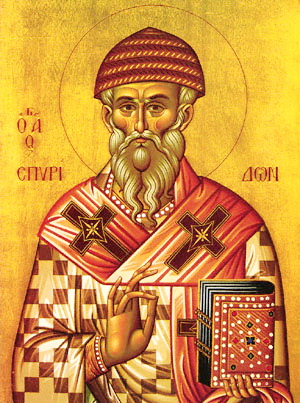Saint Spyridon of Trimythous is a Christian saint. He was born in Cyprus in 270. He lived during the time of Emperor Constantine the Great. His father and mother were peasants, simple and simple-minded, so simplicity and simple-mindedness remained his virtues for the rest of his life, although in the meantime he rose to the rank of bishop in the town of Trimythous. He married at a young age, and had a daughter, Irena (Irina), when his wife died, he dedicated himself to the service of God, as did his daughter. He participated in the First Council in Nicaea, and there he distinguished himself by his clear and simple confession of faith, as well as by the miraculous powers with which he restored many heretics to Christianity.
He died in 348, and his relics are kept in Corfu.
Once, thieves entered the flock of Saint Spyridon’s sheep, intending to steal a sheep, and when they failed, the saint gave them a ram, saying: “Here, take a ram, so that your efforts will not be in vain.”
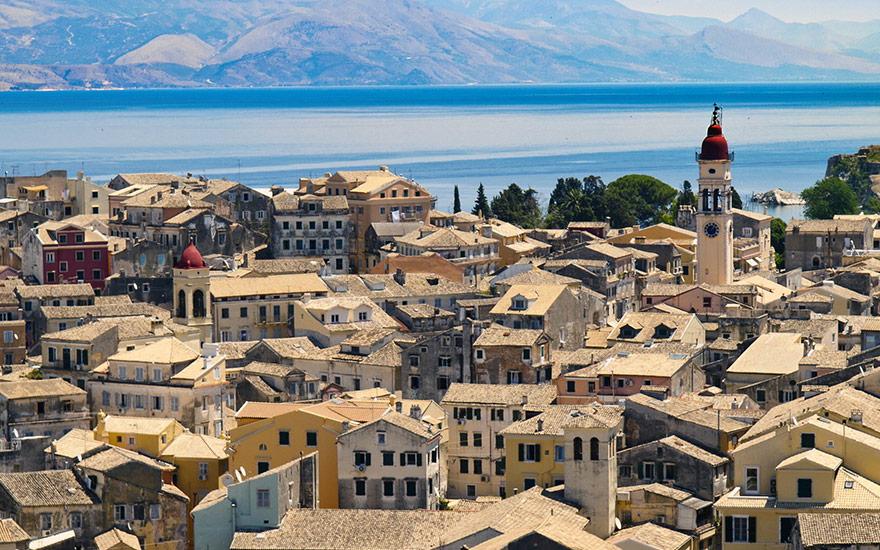
Miracles of Saint Spyridon
The fourth century of our era can rightly be considered the golden age of Christianity. In 325, the First Ecumenical Council was held, at which the “Creed” was adopted, which briefly outlines the basic dogmas of the Orthodox faith. That century gave us many saints and leading theologians, among whom are: St. Nicholas the Wonderworker, progenitor of the monasticism -Anthony the Great, St. Athanasius the Great… Priests at that time were far from the temptations of power and money – because not even two centuries had passed since supporters of Christ’s teachings were killed because of their convictions. Young, but already fully aware of itself as a real force, capable of carrying the world and goodness, the Christian church and its clergy were a pattern of moral norms for people.
This small introduction is not accidental. Because in order to understand a man, especially a saint, it is necessary to penetrate his time with the spirit.
So in 343, the island of Cyprus, one of the jewels of the Byzantine state, was privileged in the ports of glory and power of the greatest of statesmen, Emperor Constantine. At that time, a priest named Spyridon was elected bishop of the small but rich Cypriot city of Trimythous.
Although so many centuries have passed since his death, a lot is known about him. Spiridon came from a rich family, he had a luxurious house and a large estate. He was a great worker, he took an active part in the social life of his hometown, he was respected by all the residents. Regardless of the fact that he occupied a high position, any man could come to him for advice. Spyridon was ready to listen to anyone, whether it was a poor craftsman or a large landowner.
Not infrequently, they turned to him asking for material help, and Saint Spyridon would always give the requested sums, without even asking for written confirmations, let alone interest. He always said, “You’ll pay back when you can.” His greatest joy and rest from everyday duties was his wife, whose name, unfortunately, history has not preserved. Spiridon loved her very much, and over the years that love grew stronger. At that time, the marital status was not yet an obstacle for occupying a high place in the church hierarchy because – the institution of monasticism was only later consolidated in Christianity.
Once there was an accident. Spiridon’s wife fell ill and died a few days later. As noted in the memories of his contemporaries, which have been preserved to this day, that tragedy changed the life of that man once and for all. Spyridon did not grumble at God. He did not ask why such a punishment was sent to him, who had not angered the Lord with anything. He accepted his widowhood with submission and humility, seeing in it – a sign by which the Lord called him to change his life.
For a while, Saint Spyridon withdrew into solitude and had a little talk with his friends. He rarely left the house, only when it was necessary, but he was still as good and merciful to everyone as before, and people continued to come to him for help and advice.
Not even a year had passed since his wife’s death, and Saint Spyridon, Bishop of Triimythous and one of the richest and most respected men in the city, made a decision that surprised even those who knew him very well. First he forgave everyone’s debts, and then he started giving away his money. At the same time, he tried so that his savings reach the poorest and those who need it the most. Then Spiridon sold his house, all his possessions and land, and distributed the money he received to the poorest residents of Cyprus.
Of all his possessions, Saint Spyridon left only the clothes that were on him and an expensive scepter. But when he was leaving his hometown, his friends saw that this famous man was truly happy. Happy as in those days, when his beloved wife was alive. From that moment, the history of the pious bishop of Trimythous, a participant in the First Ecumenical Council, ends and the history of Saint Spyridon begins.
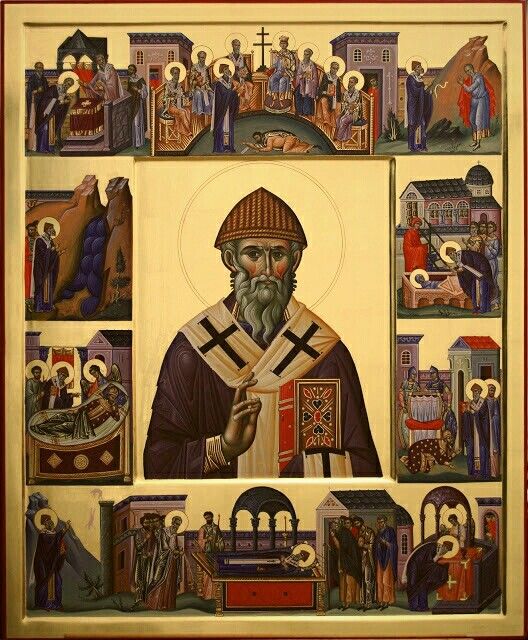
Holy Shepherd Spiridon
As soon as he started wandering around the island, Saint Spyridon discovered in himself the gift of healing. In a certain village, he, as a spiritual person, was asked to pray for a man who was dying of fever. When Spiridon read a prayer over the sick man, the dying man immediately recovered.
In every village he passed through, there would be sick or crippled people. After Spyridon’s prayer, the blind would see, the lame would leave their crutches, and those on the deathbed would return to life.
The fame of the miracle worker quickly spread throughout the island and reached even beyond its borders. The miracles were witnessed by hundreds of people, and this was confirmed through documents in the annals of the island of that time.
But Saint Spyridon shunned fame and popularity, saying, like many saints before and after him, that miracles are done by God, and he is only a conduit of His will. As a confirmation of those words, he showed how the miracle of healing takes place. And really, all the saint did was simply read a prayer over the suffering and ask the Lord to help him.
Escaping constant attention, Saint Spyridon got a job as a shepherd in some remote village. But even there the sufferers did not give him peace, and Spiridon could not refuse anyone. Once a woman came to him and brought the body of her daughter, who died a few days ago. The body had already turned gray and, although they knew about Spiridonov’s power and miracles, no one believed that he could resurrect the girl. Seeing the immense grief of the mother, Spiridon brought the child back to life. In a split second, the gray disappeared from her body, the little girl opened her eyes and spoke.
The mother, who still did not believe in the miracle until the end, but out of desperation went to ask for help from Spiridon, could not stand it and died shaken. Then Spiridon resurrected her as well. All this happened in front of numerous witnesses and was recorded in the chronicles of the island of Cyprus. The Church, having thoroughly investigated all the circumstances surrounding this event, officially recognized what happened as a miracle.
It should be said that the ability to resurrect from the dead was given to only a small number of saints. Jesus Christ was the first to do this, resurrecting his friend Lazarus. After that, resurrections did not happen often, and a double resurrection is a real rarity in the history of Christianity.
However, the Church honors Saint Spyridon not only as a miracle worker, but also as a man celebrated for his unusual wisdom. Once, even before such a nomadic life, a peasant came to him and, complaining of a barren year, asked for some wheat for sowing. Saint Spyridon suggested that he go to the barn himself and take the necessary amount.
“Aren’t you going to come with me and see how much I take so you know how much to ask me back?” – asked the peasant.
“I simply know that you will take as much as you need and give back as much as you can” – answered Saint Spyridon calmly.
The supplicant was amazed by the saint’s answer, but when he entered the granary, he was simply physically unable to take more than he needed – every extra grain fell out of his hands.
Having performed many miracles, Saint Spyridon died on December 12 at the age of 78. That day, December 25, according to the new calendar, is the main holiday for those who want to celebrate the memory of Saint Spyridon, Bishop of Trimythous.
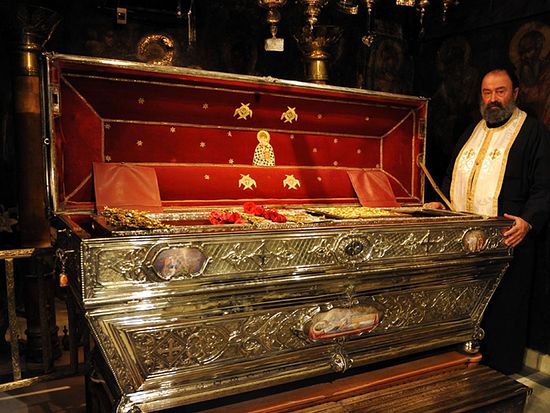
Miracles of Saint Spyridon after death
Having learned about the righteous and holy life of Bishop Spiridon, one of the Byzantine emperors ordered that his body be exhumed and placed in the crypt of the Hagia Sophia temple in Constantinople. When Spiridon’s remains were taken out of the grave, there was no end to the admiration of those present. Despite the fact that the body had been lying in the ground for dozens of years, it had not changed at all – as if the holy old man had been buried yesterday. He had all his teeth and hair, his skin was perfectly preserved, it was possible to recognize his facial features without effort. When the relics were placed in Constantinople in a special coffin, it was discovered that the saint continues to perform miracles. Many devotees, who prayed next to the sarcophagus and touched the relic, received healing.
The relics of Saint Spyridon were located in Constantinople until its fall to the Turks. After that, the incorruptible body was moved to the island of Corfu (local name Kerkyra). After learning how great the shrine is near them, the people of Kerkyra built a temple for the relics and to this day consider Saint Spyridon as the patron saint of their island. The island of Corfu is one of the few Greek islands that has never been under the rule of the Turks. Its inhabitants consider themselves true Hellenes, whose blood did not mix with foreigners.
Of course, the Turks continuously tried to conquer that picturesque island. The first time their fleet approached him, the Turkish sailors saw the great, terrifying sight of the old man, and in fear they were not allowed to land on the shore. Then they decided to destroy the temple with the relics in order to deprive the people of Kerkyra of their patron. However, Saint Spyridon contacted the residents and told them where the explosives had been planted. The explosives were found and removed in time.
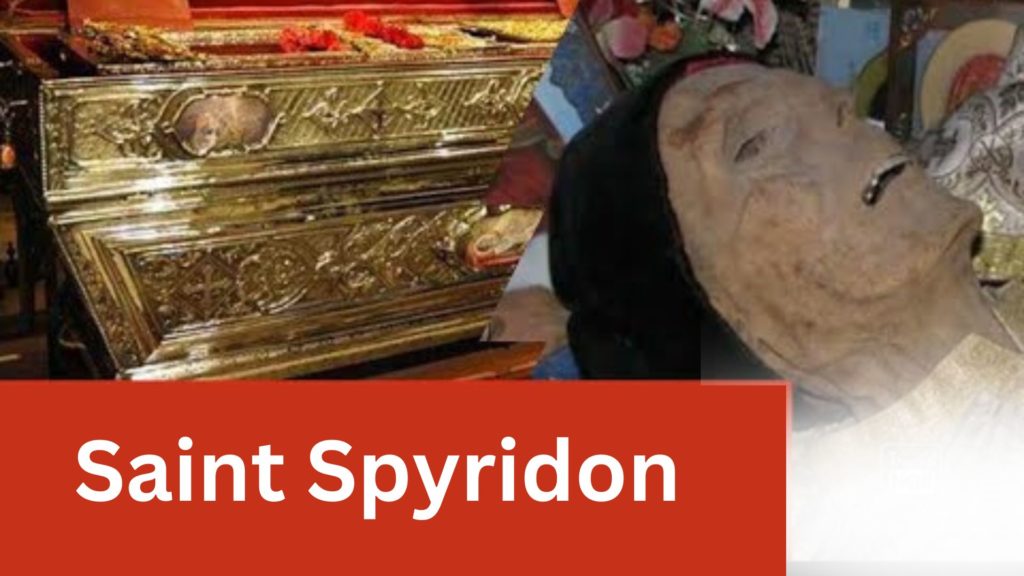
Miracles before my eyes
Regardless of the fact that all the miracles of Saint Spyridon are officially recognized by the Church and have confirmation in the chronicles of the island of Cyprus, it is very difficult for a modern person to believe in them. However, I was lucky: coming to the saint’s temple in Corfu, I saw with my own eyes the confirmation of what I had read and heard so much about.
The sarcophagus with the relics of the saint in the temple is all decorated with gold and silver objects – gifts from those whom the saint helped. That is why the place where the relic is kept is locked: the guard opens it only for Orthodox devotees, while Catholics are only allowed to kiss the sarcophagus.
Lord, it was the biggest shock of my life. Through the glass I was able to make out the saint’s face very well. His features are completely recognizable, perfectly preserved hair and snow-white teeth. The skin is slightly wrinkled and darkened, but it has preserved its shape. Indeed, the guardians of the relics say that St. Spiridon darkened recently. It happened in the 17th century when the reform of rites and liturgical books, known as the reform of Patriarch Nikon, was carried out. Obviously, that was not to the saint’s liking.
The body – relics of Saint Spyridon have a constant temperature: 36.6 degrees. His hair and nails are growing. And the most amazing thing is that the clothes he wears are changed every six months, because they wear out as if he is not lying in a sarcophagus, but walking. The guard of the sarcophagus said that it happens that the key cannot open the lock of the sarcophagus. And then the priests know – the saint is simply not in the sarcophagus; he is walking on the island.
Scientists from all over the world tried to investigate the phenomenon of the incorruptible relics of Saint Spyridon, and the Church did not prevent them. Having biophysically and biochemically examined the saint’s relics, they only spread their hands in confusion. There is no other explanation than a miracle, something that every Orthodox visitor to Corfu can see.
Although Saint Spyridon is an Orthodox saint, we rarely see his icon in churches. Priests advise: if there is no icon of the saint you want to pray to in the temple, pray to him in front of the All-Saints icon.
So, if you need help or just advice, turn to Saint Spyridon. If your intentions are pure, he will inevitably help you.
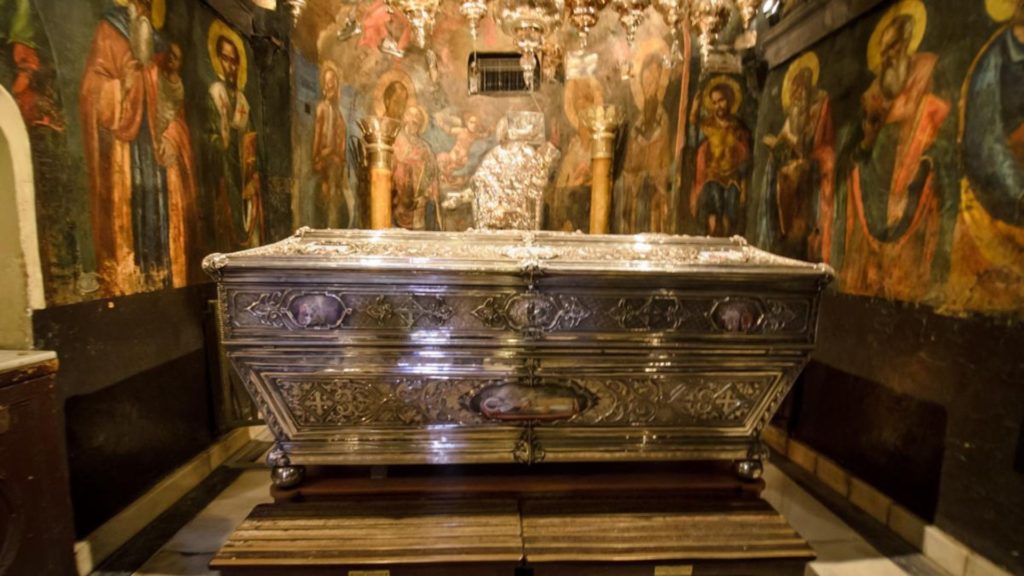
Saint Spyridon and the unfaithful Briton
The famous municipal elder, Hieromonk Ambrose, who acquired the gift of clairvoyance during his lifetime and was canonized after the presentation, wrote in one of his letters to spiritual children about a miracle that atheists can hardly accept, whose witness was the great Russian writer Nikolai Vasilievich Gogol. He, like many other Russian writers and philosophers (Dostoevsky, the Kiryeevsky brothers, Konstantin Leontiev, Sergei Nilus, etc.) often visited the Optina Desert, which was one of the main spiritual centers of Russia, where the writer had his spiritual father.
During one stay in Optina, Nikolai Vasilievich told his priest and his brothers about a miraculous event that happened before his eyes, during a trip abroad.
It happened during his veneration of the holy relics of God’s comforter Saint Spyridon of Trimythous, who associated with the famous saint Nicholas, the Miracle Worker of Myra, and together with him (as well as with other zealots of Orthodoxy) in his time approved the purity of the teachings of the Church in the fight against the heresy of priests Aria at the First Ecumenical Council in 325. Unlike the relics of Nicholas the Wonderworker, which today are located in the Italian city of Bari and flow with a fragrant myrrh, the relics of Saint Spyridon of Trimythous possess unique properties: not only are they incorruptible for so many centuries, but they have preserved the softness and suppleness characteristic of an ordinary, living human body .
On that day, when Gogol came to pay homage to the saint, believing, as is the custom every year on December 12 (December 25 according to the new calendar), they carried the holy relics around the city with great solemnity. At the same time, everyone present usually approaches them with fear and trepidation. However, that day, there was an English traveler among them, raised on the skepticism and rationalism of Protestant culture.
He allowed himself to notice that slits had certainly been made on the back of the beloved of God and the body had been carefully embalmed. Then he got quite close to the relics. What was his frenzy, bordering on horror, when the relics of the saint, that is, the saint himself, in front of everyone’s eyes… gently rose from the sarcophagus and turned his back on that very “ideal” successor of the apostle Thomas, called “unbelieving”: “Come on, my friend, look for your slots!”. Unfortunately, it is not known what the future fate of that respected Briton was. Gogol, on the other hand, was shaken to the core by that miracle.

